#radiodont
Text

sick and tired of inaccurate anomalocaris paleoart ,, decided to take matters into my own hands
#this is my first time doing sum like this idk😓😓#anomalocaris#anomalopost#opabinia#hallucigenia#waptia#radiodonta#radiodont#cambrian#cambrian period#cambrian explosion#paleozoic#paleontology#paleoart#paleo#rave art
471 notes
·
View notes
Text
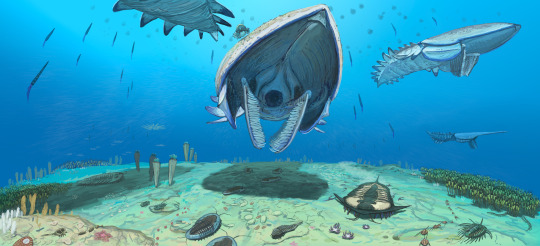

Result from the Fezouata formation #paleostream!
Behold the emperor of the Ordovician visits its benthic subjects!
312 notes
·
View notes
Text

A lineup of Cambrian critters at the Naturkunde Museum Stuttgart. If you can’t see most of them: they’re in the glass display at the bottom, with a moveable magnifying glass provided. And then there’s Anomalocaris.
Closer look at Hallucigenia:

1K notes
·
View notes
Text
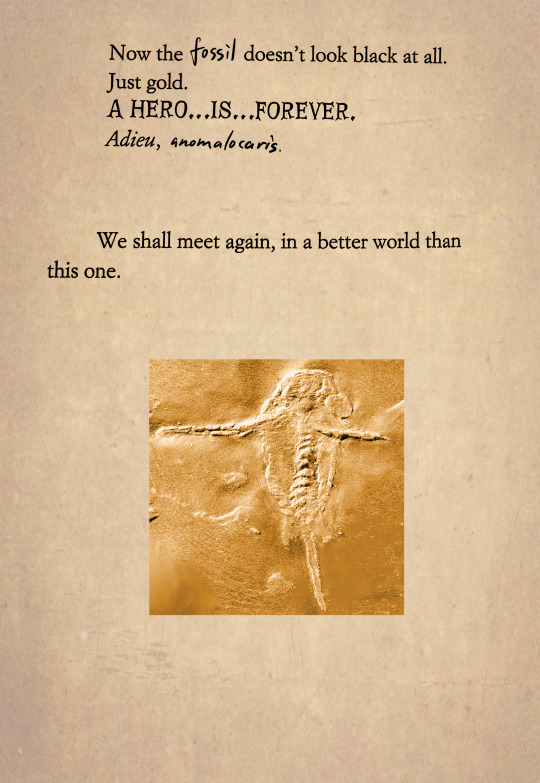
I did something
Sorry Paleozoic fans and httyd book fans >:]
Explanation:
This is the only fossil of Schinderhannes bartelsi, "the last anomalocaris" from the early Devonian period.
When it was found, the fossil had been pyritized, turning it a color of gold.
The words are taken from the novel How to Betray a Dragon's Hero, the 11th book of the series How to Train Your Dragon.
Here the protagonist is writing in his memoir about a character who sacrificed his life for him.
#paleontology#paleoblr#paleozoic#cambrian#devonian#radiodont#anomalocaris#Schinderhannes bartelsi#arthropods#(maybe?)#httyd books#how to betray a dragon's hero#see if this post can reach its target audience(?)#I wonder if some httyd books fans are also fans of paleontology#or the reverse(?)#made this pic using Procreate#I like the effects
81 notes
·
View notes
Text
Paleostream 27/01/2024
results of today's #Paleostream
today we drew Drepanosaurus, Ostenoselache, Schinderhannes, and Cronopio




#Paleostream#paleoart#paleontology#digital art#artists on tumblr#palaeoart#digital artwork#digital illustration#sciart#id in alt text#Drepanosaurus#Ostenoselache#Schinderhannes#Cronopio#radiodont#mammal#shark
87 notes
·
View notes
Text
Titanokorys passing by a crowd of Cambrian critters
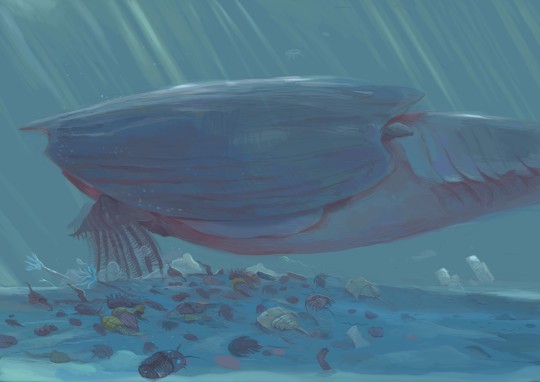
#art#illustration#digital art#paleoart#paleo art#illustrationdigital#paleontology#illlustration#arthropod#Cambrian period#radiodont#Titanokorys#burgess shale
880 notes
·
View notes
Text
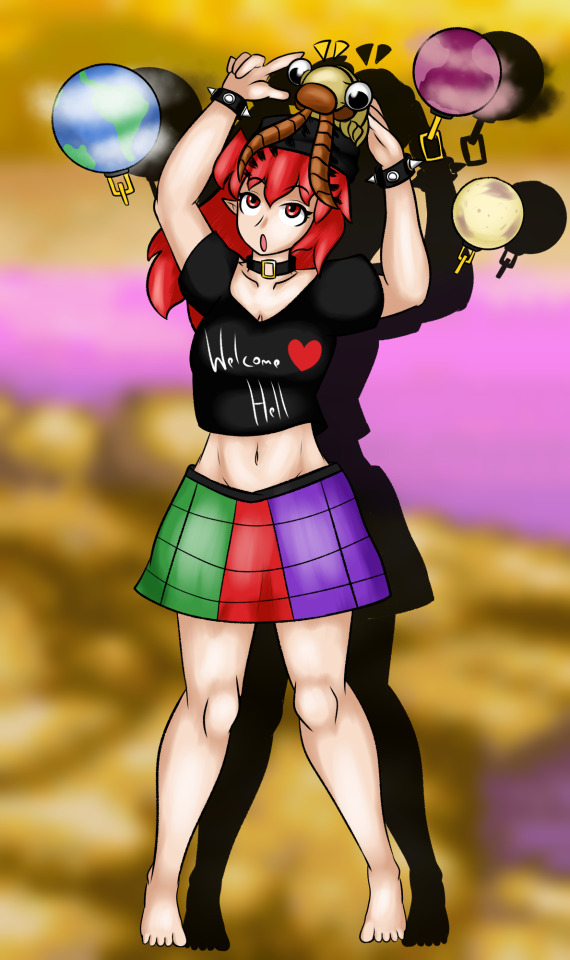

A commission for @anomalocaris2hu of Hecatia and a little anomalocaris fella!
It does make sense for us two to meet each other, I've existed since faar too long and got the opportunity to see such a critter doing their thing
#touhou#touhou project#東方project#hecatia lapislazuli#hecatia#touhou fanart#commission art#art commisions#anomalocaris#radiodont
56 notes
·
View notes
Text
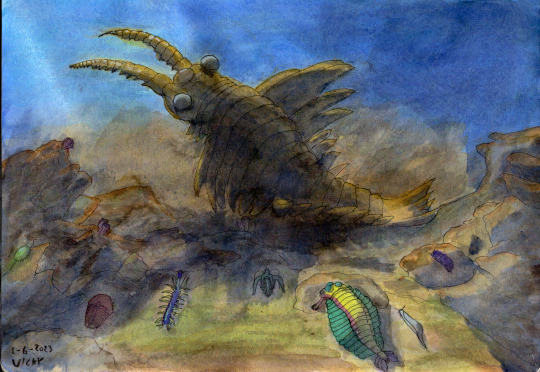
Mighty Anomalocaris stirs, spreading dust and terror throughout the Cambrian sea. Opabinia, Hallucigenia, Pikaia, Canadia, Burgessia, Marella, and Elrathia can only hope the rocks and ridges they cover behind will hide them.
#cambrian#anomalocaris#Opabinia#Hallucigenia#Pikaia#Canadia#Burgessia#Marella#Elrathia#hazelia#radiodont#arthropod#paleoart#my art#palaeoblr#lobopod#trilobite#chordate#sponge#cambrian explosion
175 notes
·
View notes
Text


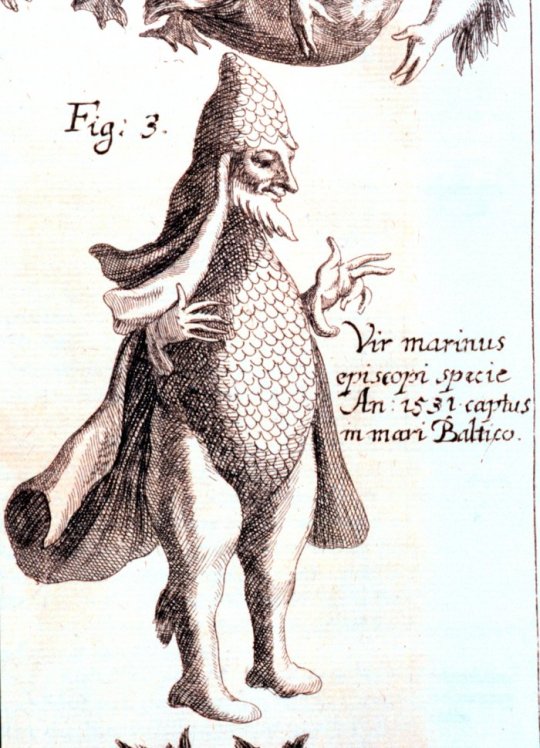
Another cryptid reimagined as a radiodont/anomalocarid. Today it's the medieval Bishop Fish redone as an upright cousin of Hurdia.
For those who don't know, the Bishop-fish was a sea monster alledgedly captured in the 16th century and brought to the king of Poland, who wanted to keep it. When a group of Catholic bishops viewed the creature, it gestured to them, begging for release. The bishops intervened on the being's behalf and were able to get it freed.
In my illustration the hurdid head carapace forms the sea-bishop's miter while its Great Appendages form the "hands" and "beard.
36 notes
·
View notes
Text

design sketch of a dude ive had on the backburner
#radiodont#anomalocaris#anthro#furry#character design#under the eyes#hes supposed to be a friend to round out a trio with my other chars cleary and gully#just some kids hangin out#taz moment
934 notes
·
View notes
Text

OH MY GOD IM JUMPING UP AND DOWN FINALLYYYYYYY
#I HAVE BEEN SAYING THIS#FOR SO FUCKING LONG#FINALLY OH MY GODDDDDD#IM ECSTATIC#I HAVENT BEEN THIS HAPPY SINCE I SAW FLAME IN THE MR GRAPHIC NOVEL#OH MY GOD#FINALLY#OMFG I CANT PUT INTO WORDS HOW THRILLED I AMMMM OH MY GOD#maybe theyll stop demonizing him now#anomalocaris#cambrian#cambrian period#trilobite#radiodont#paleontology
279 notes
·
View notes
Text

Another #paleostream sketch
I frequently critique alien designs in pop culture for being incredible unimaginative. One reason is that our own plants history has seem numerous clades come and go that put Hollywoods creativity to shame.
Here some Lyrarapax (a radiodont) attack a Yuyuanozoon, the largest known member of a clade called Vetulicolia
500 notes
·
View notes
Text



Some anomalocaris attacks!
Blip - Snewbew
Volans - Pokeshadow
Anton - Snalz_https
Priscilla - diceyricey
Clementine - Donut-Toast (me!)
Abysse - jpegcat
#donutdrawsthings#oc#ocs#original character#anomalocaris#anomalocaris oc#clementine#artfight#artfight2023#artfight attack#artfight werewolves#artfight 2023#paleoart#cambrian oc#cambrian period#cambrian explosion#radiodont#anomalocaris art#cambrian art#fossil oc#anthro oc#clementine is very happy to see older anomalocarids like her!!
95 notes
·
View notes
Text
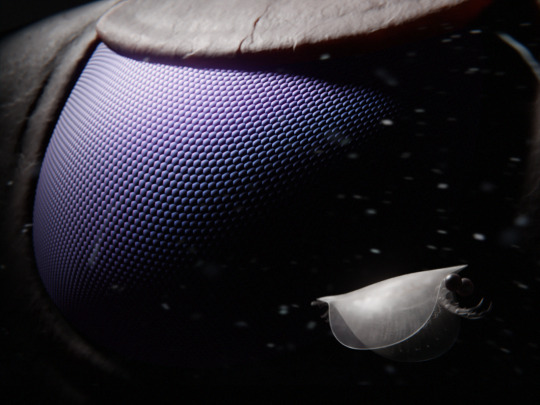
514 millions years ago in what will one day be known as the Emu Bay Shale (South Australia), a tiny Isoxys glaessneri encounters the hunter 'Anomalocaris' briggsi.
'Anomalocaris' briggsi was a large suspension-feeding radiodont related to the famous raptorial predator Anomalocaris canadensis. It is one of two radiodont species for which exceptionally detailed fossils of compound eyes are known. The eyes in this species are unsual for radiodonts in that they are not stalked, and protected by a small plate which was likely a modified version of the lateral carapace elements found in hurdiids. The eye morphology suggests that 'A.' briggsi was a mesopelagic species capable of inhabiting depths of several hundred meters, using its acute vision to detect planktonic prey (Paterson et al. 2020).
Isoxys was a cosmopolitan genus of stem-euarthropod in the Lower and Middle Cambrian, characterized by a bivalved shield covering its whole body, two large eyes, and a frontal pair of so-called 'great appendages' probably used for grasping food items. These appendages show similarity with both the frontal appendages of megacheirans and those of radiodonts like Anomalocaris, and its mix of derived and basal anatomical traits (such as biramous appendages but an unclerotized trunk) make it a crucial organism for understanding the early evolution of arthropods (Legg & Vannier 2013, Zhang et al. 2021).
I tried to recreate the feeling of this common yet lovely type of scene in sci-fi movies where a ship or station gets dwarfed by a gigantic object slowly emerging behind it from the shadows - the only difference is that the 'giant' eye here is only about 3 cm wide, though that was still huge for the time.
References and technical details about the reconstruction under the cut:
The soft parts of I. glaessneri are not known (except for the eyes). Trunk appendages are based on I. curvirostratus (Zhang et al. 2021). Great appendages are partially based on I. communis, which may be the adult form of I. glaessneri (Fu et al. 2012); unfortunately, the great appendages of I. communis are poorly preserved (García-Bellido et al. 2009), so frontal appendage morphology was complemented with the better-known I. acutangulus.
The Isoxys is depicted here with only 11 pairs of trunk limbs, instead of the usual 13+ (Zhang et al. 2021). Based on the assumption that the ancestral arthropod grew by post-hatching addition of segments (anamorphosis) (Liu et al. 2016), a reduced number of trunk limbs was judged appropriate given the small size of the specimen (ca. 6.5 mm) and the possible juvenile nature of I. 'glaessneri'.
References:
Fu, D., Zhang, X., Budd, G. E., Liu, W., & Pan, X. (2014). Ontogeny and dimorphism of Isoxys auritus (Arthropoda) from the Early Cambrian Chengjiang biota, South China. Gondwana Research, 25(3), 975–982. https://doi.org/10.1016/j.gr.2013.06.007
García-Bellido, D. C., Paterson, J. R., Edgecombe, G. D., Jago, J. B., Gehling, J. G., & Lee, M. S. Y. (2009). The bivalved arthropods Isoxys and Tuzoia with soft-part preservation from the Lower Cambrian Emu Bay Shale Lagerstätte (Kangaroo Island, Australia). Palaeontology, 52(6), 1221–1241. https://doi.org/10.1111/j.1475-4983.2009.00914.x
Legg, D. A., & Vannier, J. (2013). The affinities of the cosmopolitan arthropod Isoxys and its implications for the origin of arthropods. Lethaia, 46(4), 540–550. https://doi.org/10.1111/let.12032
Liu, Y., Melzer, R., Haug, J., Haug, C., Briggs, D., Hörnig, M., He, Y., & Hou, X. (2016). Three-dimensionally preserved minute larva of a great-appendage arthropod from the early Cambrian Chengjiang biota. Proceedings of the National Academy of Sciences, 113, 5542–5546. https://doi.org/10.1073/pnas.1522899113
Paterson, J. R., Edgecombe, G. D., & García-Bellido, D. C. (2020). Disparate compound eyes of Cambrian radiodonts reveal their developmental growth mode and diverse visual ecology. Science Advances, 6(49), eabc6721. https://doi.org/10.1126/sciadv.abc6721
Schoenemann, B., & Clarkson, E. N. k. (2011). Eyes and vision in the Chengjiang arthropod Isoxys indicating adaptation to habitat. Lethaia, 44(2), 223–230. https://doi.org/10.1111/j.1502-3931.2010.00239.x
Zhang, C., Liu, Y., Ortega-Hernández, J., Wolfe, J. M., Jin, C., Mai, H., Hou, X. G., Guo, J., & Zhai, D. (2021). Differentiated appendages in Isoxys illuminate origin of arthropodization. Research Square.
#anomalocaris#radiodont#isoxys#arthropod#eyes#compound eye#pelagic#emu bay shale#cambrian#paleozoic#paleoart#my art
485 notes
·
View notes
Text
Subjectively Paleoart Styles
Subjectively recently released a video talking about different styles of paleoart and made a call to action to make your own, so as a paleoartist i had to engage with all three prompts, scientific, fantasy, and cartoon (style explanation in alt text)
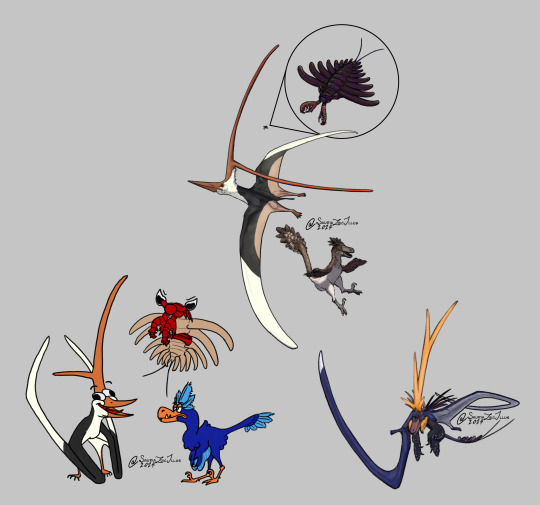



#paleoart#paleontology#digital art#artists on tumblr#digital artwork#palaeoart#digital illustration#id in alt text#sciart#fantasy#fantasy art#fantasy monster#cartoon#cartoon style#cartoon art#dinosaur#pterosaur#radiodont#Nyctosaurus#Kuru#Lyrarapax unguispinus
52 notes
·
View notes
